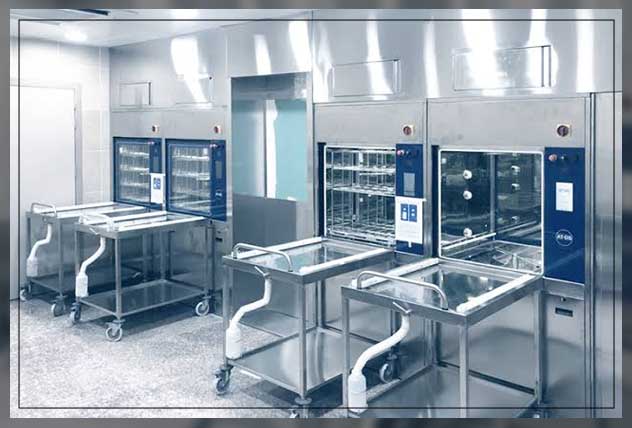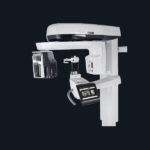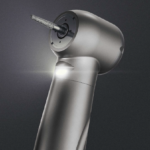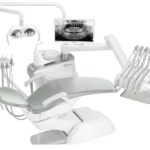
Do you know that a Disinfectant machine is an important part of your healthcare system?
According to WHO, the World Health Organization, hundreds of millions of people around the world are affected every year by avoidable infections in health care, i.e. HAI, and healthcare-associated infections.
Moreover, an unnecessarily large number of HAIs come as a result of handling medical equipment and medical devices that contain contaminants.
Though these devices are vital for saving the lives of your patients and protecting health care workers.
You may use types like ULV fogger, or spray disinfectants at your workplace.
However, it is important that training, equipment, and procedures are in place to make sure that you clean the equipment safely and disinfect it after every use.
Thorough and effective cleaning of these important equipment pieces is important to avoid the possibility of disease spreading from one patient to another.
Let’s learn more about it in detail.
Disinfect Machine and Disinfectant Process
Before diving into the disinfection process of medical devices, let’s discuss general principles for cleaning and disinfecting.
According to WHO, the decontamination process is divided into three levels: cleaning; disinfection, and sterilization.
Let’s discuss it as follows:
1# Cleaning Cleaning is the first step which implies the removal of contagious biological material, dust, and soil from the surface that you need to disinfect.
You can either perform this process manually or mechanically, using water with detergents or enzymatic products.
After the removal of physical matter, the second step is disinfection.
2# Disinfection This is the second step that involves removing disease-producing organisms to render an item safe for handling.
For instance, placing medical instruments in a washer – sterilizer.
Disinfection by definition suggests using an agent that inactivates nearly all disease-producing microorganisms.

However, it may not achieve the same reduction in microbial contamination levels as sterilization.
3# Sterlization This process helps to render an object free from microorganisms including viruses and bacterial spores.
As sterilization of all patient-care items is not necessary, healthcare policies must identify on the basis of intent of the use of items, whether cleaning, disinfection, or sterilization.
Learn more about Sterilization and Disinfection here.
Features of a Disinfectant Machine
Some of the popular features of disinfectant machine are:
- wireless electric ulv fogger machine disinfectant portable handheld rechargeable ulv sprayer
blue light nano steam
-
nano steam gun atomizer
-
spray volume fog tool
-
disinfection sprayer blue light
-
steam gun atomizer machine
-
machine adjustable spray volume
-
adjustable spray volume fog
-
light nano steam gun
-
atomizer machine adjustable spray
-
sprayer blue light nano
-
gun atomizer machine adjustable
Difference between Disinfection and Sterilization
It is important to note that disinfection helps to remove germs, however, sterilization removes all good and bad microorganisms.
Moreover, sterilization is a very common procedure in a medical setting while disinfection takes place in households, businesses, and schools.
The decontamination process of instruments and medical devices plays a crucial role in the prevention f HAI.
Defective sterilization of surgical instruments and disinfection of reusable devices.
And objects can help avoid the infections leading to patients, health care professionals, and visitors.
Such equipment includes endoscopic, respiratory, transportation devices, etc.
Furthermore, HAIs that appear due to inadequate decontamination procedures or harmful device reuse practices are:
- surgical site infections, SSI
- HIV infections
- Hepatitis B and C
- urinary and vascular catheter-associated infections
Additionally, in the light of recent threat due to Coronavirus, the awareness about the spread of viral pathogens is increasing.
Thus, it is leading to paying more attention and investing in IPC infrastructure, infection prevention, and control, and improving medical practices.
Learn more about Infection Control and Prevention Guidelines here.
Features of an Ideal Disinfectant Machine
According to WHO guidelines for decontamination, there are a few features of an ideal disinfectant are:
They must have germicidal activity, will rapidly kill a wide range of microorganisms even spores, and is chemically stable.
Moreover, these machines should be effective in the presence of organic compounds, compatible with the surface that you want to disinfect, have the ability to penetrate into services, and must be inexpensive and aesthetically acceptable.
Learn more about Medical Supplies Dubai here.
Benefits of Using a Disinfectant Machine
With invasive procedures, there are chances of contact between the mucous membranes or sterile tissue of the patients, and the surgical instruments or medical devices.
A significant risk of such types of procedures is responsible for introducing pathogenic microbe, which potentially results in infection.
Moreover, when you do not properly disinfect or sterilize the medical equipment, it increases the risk of infection due to the breach of host barriers.
For both your hospital staff and patients, you need to make sure that germs are destroyed.
This helps to reduce the spread of infection.
One such infection of this is fighting healthcare-associated infections, HAIs, which are infections hospital patients can get due to their stay at the hospital.
Additionally, surgical instruments, contaminated equipment, or improper staff hygiene can cause HAIs.

Some of the benefits are:
- It helps to eliminate pus, blood, foreign particles, and dirt that can lead to dangerous complications for the next patient that needs surgery where the medical practitioner will use the instruments
- Helps to decrease bioburden, i.e. the number of non-sterilized bacteria living on the surface
- Prevents the corrosion of expensive and highly precise tools that have delicate pivots and hinges
- Makes sure the safe transport of equipment that needs to be packed and assembled for sterilization or disinfection.
When you properly use a disinfectant machine, sterilization and disinfection can help to make sure they use non-invasive and invasive medical devices.
Learn more about Suction Machine here.
What determines how clean a Medical Device should be?
The environment the devices are in, what the devices are used for, and what material the device is made from all determine what level of disinfectant or sterilization it needs.
It is important to note that you need to pre-clean the devices before disinfecting or sterilizing them.
Depending what the devices come in contact with, determines the level of sanitation.
The following are the three levels:
1# Citicial Care Devices – Sterilization In this process, you will have to steam the medical devices in extreme heat in order to sterilize them.
However, there are also chemical sterilants that are low heat alternatives for devices that are made with plastic.
Devices in this category include anything that comes in contact with the sterile body, tissues, and fluids, like internal organs, or the cardio-vascular system.
This also includes surgical equipment, catheters, and implants.
Semi-Critical devises High-level disinfectant is any form of disinfection that helps to kill all living organisms except high levels of bacterial spores.
Moreover, you will have to perform this with a chemical disinfectant like Glutaradehyde, hydrogen peroxide, ortho-phthalaldehyde, or other chemicals by FA, the Food and Drug Administration.
Another factor to consider is the “dwell time” or the amount of time a chemical needs to expose to a surface in order to kill microbes.
Semi-critical devices are those that get exposed to mucous membranes in the nose, pharynx, esophagus, etc, or non-intact skin.
Devices in this category are anesthesia breathing circuits, respiratory therapy, and endoscopes.
3# Non-Critical Devices Low-level disinfectants help to kill some viruses and bacteria with a chemical germicide registered as a hospital disinfectant by the EPA.
Make sure to disinfect the devices after contact with a patient who is on contact precautions.
It is important to note that these devices may come onto contact with skin.
Therefore, are at lower risk than devices in other categories.
Non-critical devices are divided into two categories: patient care and environmental surfaces.
Patient care items are blood pressure cuffs, IV poles, etc.
While environmental surfaces are computers, lab benches, and bedrails.
Methods of Sterilizing Medical Equipment
It is important to choose to best sterilization method when it comes to medical equipment.
At best, using an inappropriate or insufficient method can keep your medical equipment from receiving clearance from the Food and Drug Administration, FDA, and other regulatory bodies.
However, at worst, inadequate sterilization can result in the transmission of infectious diseases leading to patient illness or even death.
Some of the methods are:
Steam Sterilization
Most sterile processing departments have steam sterilizers; Autoclaves.
This is because steam can help clean a number of common medical devices.
And it is also the safest and cheapest option.
Some technicians will only consider using another method when the medical device is made of a heat-sensitive material or cannot be steam-sterilized.
The autoclaves apply intense pressure and heat to kill or destroy all microorganisms on the object.
With this machine, appropriate decontamination can help to clean the outside surfaces of the medical equipment.
Moreover, you can also prevent the damage by using either paper or cotton to wrap the instruments before the process begins.
However, for best results, you must expose the steam to all equipment surfaces.
Make sure to leave enough space so that each piece can freely move.
Dry Heat Sterilization
In case when steam is unable to penetrate an instrument or destroy it, you will have to use dry heat.
Dry heat is a strong but slow technique that uses high temperatures and time.
Due to this, it is not suitable for many materials, however, is still more reliable than other options.
This process uses air for around 340 degrees F to kill microbial life.
Chemical Sterilization
Prepared chemical solutions are involved in this process.
These include ozone, ethylene oxide, hydrogen peroxide, and bleach.
Moreover, these chemicals have the power to kill a wide range of pathogens and have properties that can also be harmful to humans.

In this process, you will need to submerge the equipment into a chemical completely for a certain amount of time until the pathogens die.
After sterilization, rinse off the equipment and allow it to dry.
It is important to note that chemical sterilization is not suitable for biological materials, fiber optics, and high heat-sensitive materials.
Plasma Gas Sterilizers
This type uses low-temperature hydrogen peroxide-based gas plasma inside a chamber to kill any microorganism on both dental and medical equipment.
It helps to kill spores, bacteria, fungi, and other viruses.
Once you remove the vapor from the chamber, it produces a plasma of a lower temperature that helps to make sure total sterilization for all equipment.
Oxygen and water are the remainder of this process and are safe for the environment and medical staff.
However, it is a costly method, but an extremely effective and excellent choice.
Vaporized Hydrogen Peroxide, VHP Sterilizers
Just like plasma sterilization, these use hydrogen peroxide vapor, VHP.
VHP sterilizers help to remove humidity from an enclosure and the generator rapidly injects VHP to reach an ideal concentration of sterilizing equipment.
Microorganisms that are present are removed effectively by vapors.
The process is then reversed by the generator, which breaks down the vapor into eco-friendly elements.
Additionally, VHP sterilization has a low cycle time, which can result in having the capability to sterilize high-volume batches of equipment.
Final Thoughts
Engiomed provides world-class, quality medical products for your healthcare facility. A disinfectant machine is an important part of your clinic or healthcare facility that helps to make sure that there is no or little transmission of HAIs.
It also helps to make sure that both your patients and staff are safe from infections, diseases, and germs, which can otherwise be fatal or life-threatening in some cases. You can also contact us for more details





Comments